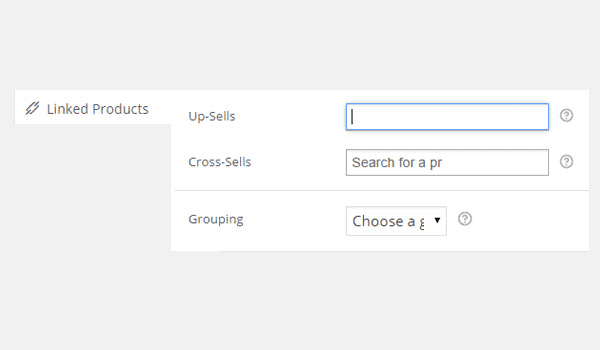1. Add Products
1.1. Go to Products> Add Product.

1.2. Enter product name and description.
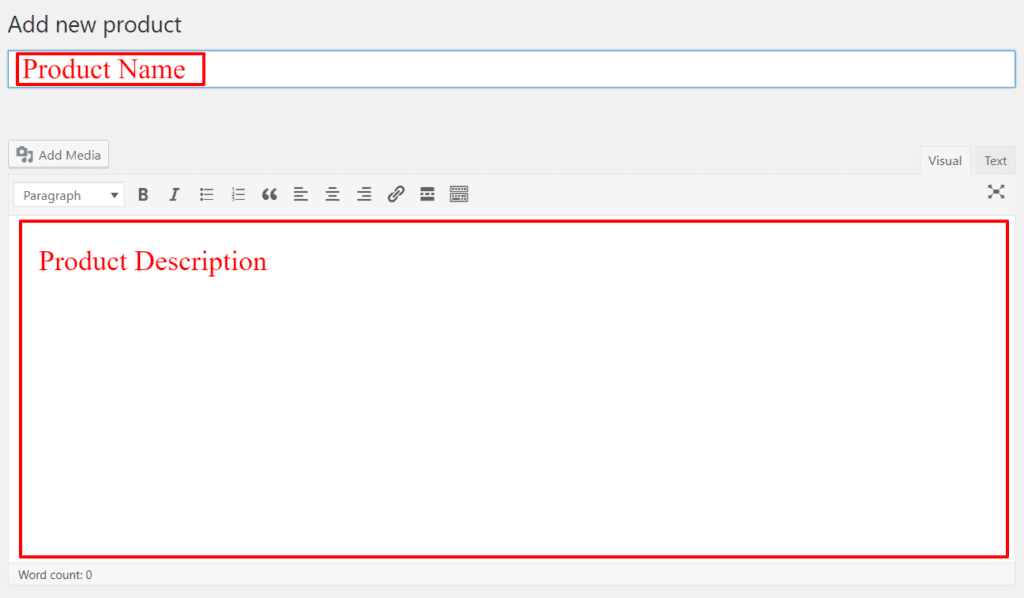
1.3. Next, scroll down the page and select Simple product from Product Data.
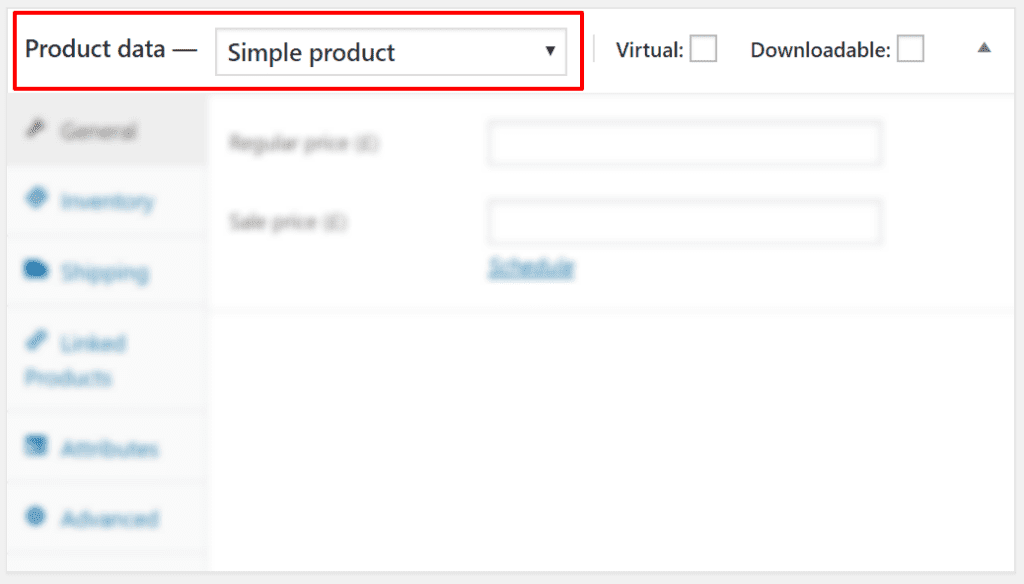
1.4. Below the option of Product data, there is a column where you can edit different settings of the product such as:
- General
- Inventory
- Shipping
- Linked Product
- Attributes
- Advanced
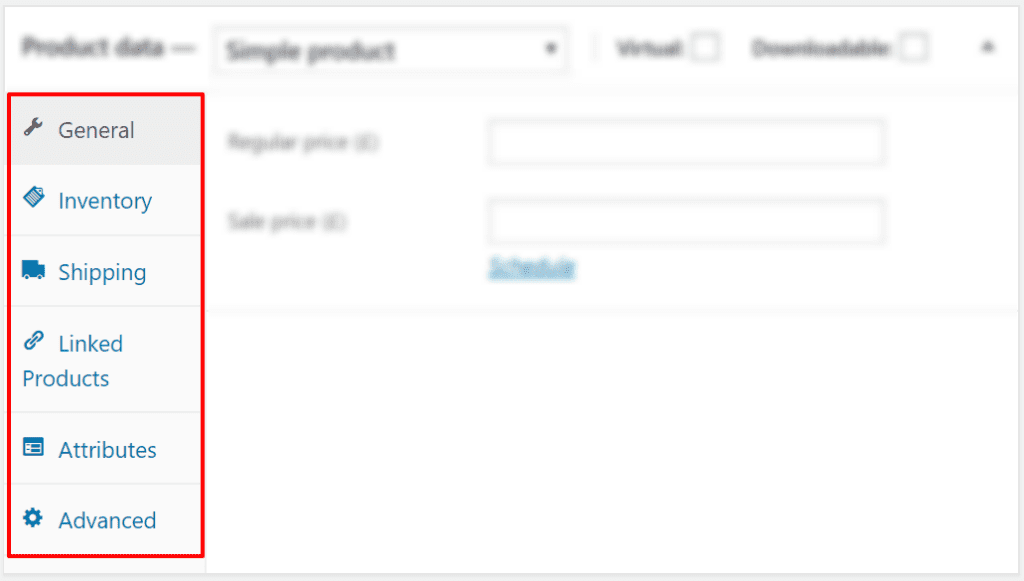
2. General
First of all you’ll have to configure the General tab. In this tab the options which you will come across are:
SKU
SKU stands for “Stock Keeping Unit” and this is used as a tracking tool to keep a record of every single product which is in stock. Every product or service which your store offers bears a unique SKU so it never gets mixed up with other product identification codes.
Regular Price
This field corresponds to the actual price of your product. This is the amount which a customer will pay to purchase the product.
Sale Price
The sale price corresponds to the amount which will apply in case you are offering a discount on the product. This price will be less than the Regular Price.
Tax Status
This field will decide how the taxes will be applied on your product. Here you see a dropdown menu which displays three options:
- Taxable: It means that all taxes will be applied on this product.
- Shipping only: It means that tax will be applied only for shipping.
- None: No tax will be applied on this product.
Tax Class
From this option you will choose to which Tax Class your product will belong.
Whichever class you choose, all its rates will apply on this new product. The classes which are shown in the menu are:
- Standard
- Reduced Rate
- Zero Rate
The below figure shows that we have set the value of SKU=AB0012, Regular Price=15.00 pounds, Sale Price=10.

3. Inventory

The settings in the section of Inventory will make sure that your product stock is available to your customers and they do not experience any out of stock notifications. The options which are to be configured here are:
Manage stock?
If this box is checked, SmartSeller will start monitoring the stock status of your product. In the portion of Inventory settings (SmartSeller> Settings > Products > Inventory) we discussed how an email will be sent to the store owner in case any product runs out of stock. So this option will work concurrently.

Here you will notice one more thing that when you check this option a new option will appear right below it, which is for Stock Qty (stock quantity). You will enter the number of products which are currently in stock.
Stock Status
This option will display whether this product is available for sale or not. Two options are there in the menu, i.e. In stock and Out of stock. If you choose the latter option then a notification of out of stock will be displayed at the front-end and the customers will not be able to place the order.
Allow Backorders?
If online stores allow backorders then it means that if by chance any product gets out of stock, customers will still be able to place their orders, which may take a while longer than usual ones. So with this option you can control whether or not you will provide this facility. Three options are there:
- Do not allow
- Allow, but notify customer
- Allow
Sold Individually
The last option in this section is again a checkbox, Sold Individually, which will allow a customer to purchase any product in a single order. This means that a customer will not be able to place multiple orders of the product, e.g. a customer can only purchase one T-shirt at one time.
4. Shipping
With the help of the Shipping tab you can edit various options which will help SmartSeller to calculate the shipping cost. These options are discussed below:
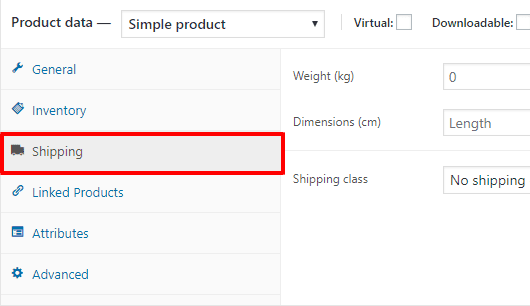
Weight (kg)
Here you will specify the weight of your product so that when any customer places an order may know how much this product will weigh. As a default the figure you enter will be measured in kilograms (kg).
Dimensions (cm)
The exact dimensions of the product in centimeters (cm) are entered here. Both the weight and dimensions can help you to calculate the shipping cost, because as the size and weight of the product increase, the shipping cost increases, and vice versa.
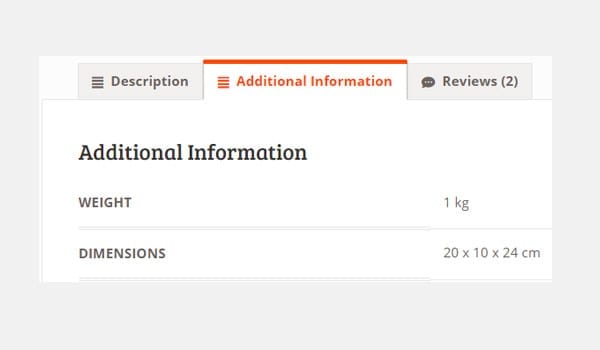
The above figure shows both these parameters for weight and dimensions being displayed in the Additional Information of the product.
Shipping Class
You may associate your product with any shipping class for various shipping methods. This way you can group together products which are similar to each other.
5. Linked Products
With this tab you can link your product with other products in your store, which can be a good marketing strategy to increase your sales. Here you see three options:
Up-Sells
It is a common observation to find recommended items or posts linked up to an article on a blog or website. This is exactly what Up-Sells is. Here you will enter all those products which you recommend that your customers view in reference to the currently viewed product. Be smart enough to attach better recommended products and you’ll be able to secure more sales. CLICK HERE to learn more about up-sells.
Cross-Sells
Cross-Sells allows you to add all the products which you want to promote on your online store alongside the currently viewed product. CLICK HERE to learn more about cross-sells.
Grouping
If you want your product to be a part of any group then you may choose the group option in this setting.
6. Attributes
Users can add additional data for their product in the form of different attributes which enhance the browsing capability.
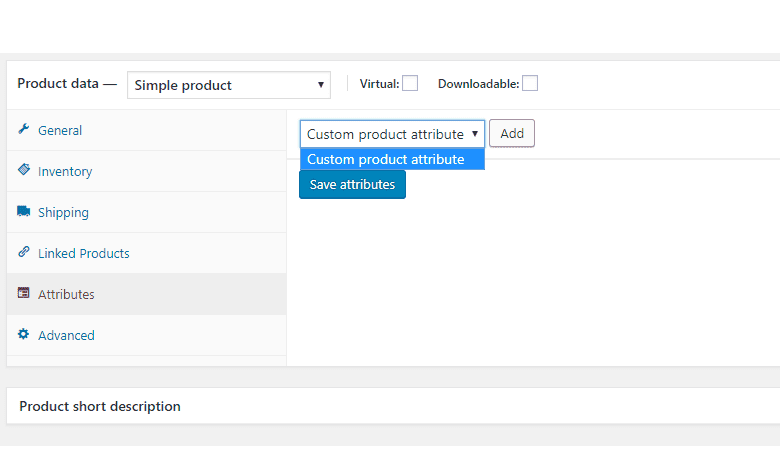
How to Add Attributes?

The figure above shows that you can click the Add button to create new attributes based on the following filters:
- Custom product attribute
- Color
- Size
Custom product attribute
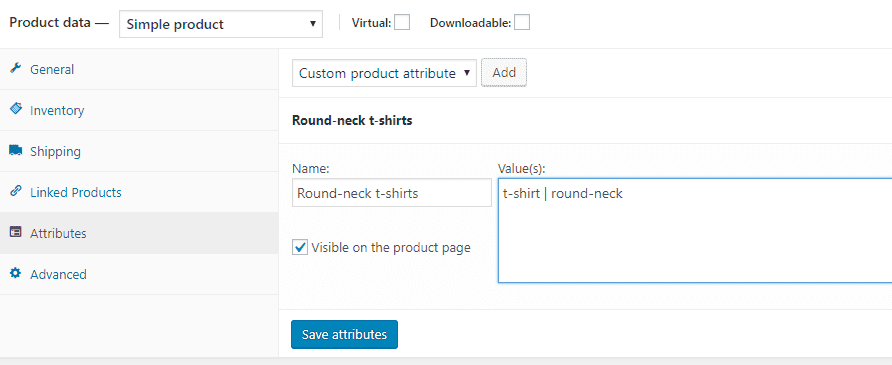
With this option selected you see a field for Name where you will enter the name of your attribute. The next field is for the Value(s) of the attributes. You can also find a checkbox which, when enabled, will make your attribute Visible on the product page.
Once you are done with filling all the fields, click the Save attributes button.
Color
After creating the attribute color with values Black, White, Green and so on, you are able to see as shown below.
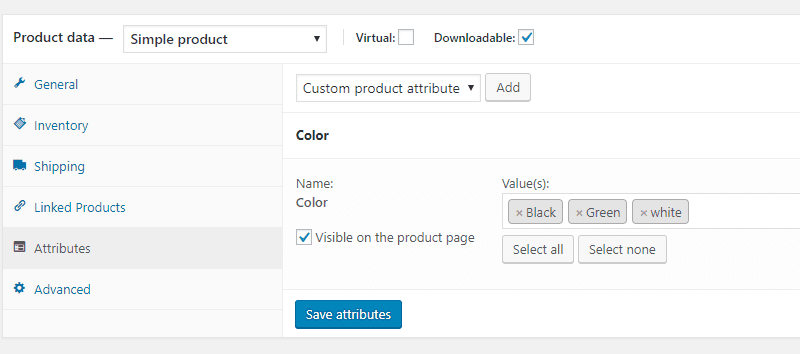
If you choose Color, then a tab like the above figure will appear. Here you will again find the checkbox for Visible on the product page. Next to it we see a box where you can enter the color Value(s). As a default setting, the menu will allow us to add Black, Blue and Green colors. However, if you want to add custom colors then click the Add new button. Click Select all to add all the colors which are available in the list and click Select none to remove all colors from this box. Pretty basic stuff.
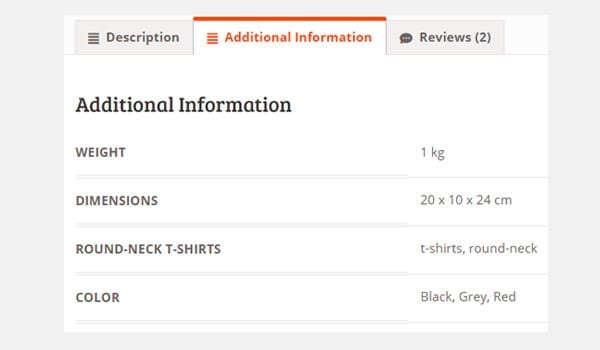
The figure above shows how these attributes will appear on the product page in the section of Additional Information.
7. Advanced
The Advanced tab will allow users to fill the following fields:

Purchase Note
This is a note which is sent out by the store owner every time a customer purchases this product. However, this field is optional.
Menu order
This field will decide the ordering position. As a default its value is set to 0. If you enter a number greater than 0 then this product will appear after all the products which have order = 0.
Enable reviews
The last option is a checkbox for reviews. If you enable it then you will allow your customers to add reviews for the product.
8. Virtual and Downloadable Products
Right next to the option of Product Data you will see two checkboxes which display Virtual and Downloadable. Associated with these options you can find some changes which will appear in the set of tabs.

Virtual Products
Virtual products are all things which do not have a physical existence, i.e. they are intangible. So obviously these products cannot be shipped. Example of such goods are: Consultation, Support Services, etc.
As Virtual products are not shipped, the Shipping tab disappears from the settings menu. All other tabs and their options remain intact.

Downloadable Products
Downloadable products refer to items which when purchased appear as a downloadable link. Downloadable products can also be termed as virtual because they are intangible. Examples are downloadable audio, video, software, etc.
With this option enabled you can find changes in the General tab.

A complete new section of settings for Downloadable Files appears the moment you enable the Downloadable checkbox. Click the Add File button to add the product Name and URL. The next two options are for Download Limit and Download Expiry, which are self-explanatory. The last option decides the Download Type, which can be Standard Product, Application/Software or Music.
To make your product live, simply choose the category, set the product image and click the Publish button.

